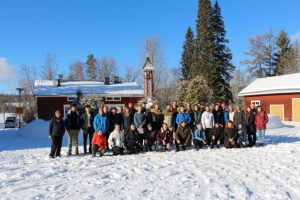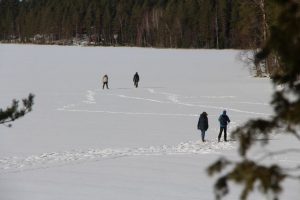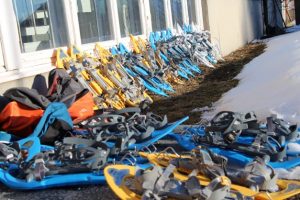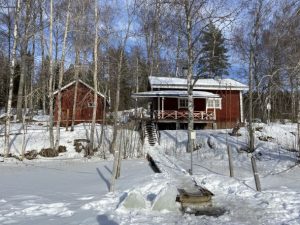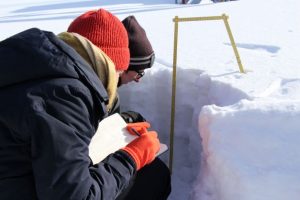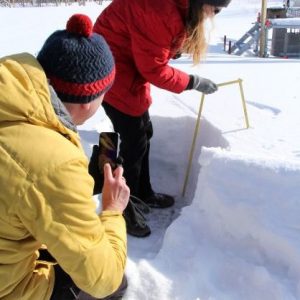IRTG & University of Helsinki joint winter school
The joint winter school by (AC)³ and the University of Helsinki in March 2023 provided a great opportunity to learn about Arctic amplification in the remote environment of the Forestry Field Station in Hyytiälä, Finland. Scientists from the University of Helsinki and (AC)³, including Mercator fellows Matthew Shupe (University of Colorado Boulder, USA) and Irina Gorodetskaya (Interdisciplinary Centre of Marine and Environmental Research, Portugal), gave lectures and led projects in working groups of four to seven participants. There were about 40 doctorate candidates participating: about 30 from (AC)³ and 10 additional PhDs from the University of Helsinki or other institutions. Although it’s always fun to catch up with the (AC)³ PhDs from the other locations in Germany, it was also nice to meet new people and network.
The main topic of the winter school was the role of clouds (in feedback mechanisms). However, we heard interesting talks from a wide range of (AC)³ topics including but not limited to surface energy budget, snow, aerosol, remote sensing of atmosphere, sea ice and ocean and atmospheric rivers. Each morning we heard two lectures followed by group project work in the afternoon.
Hyytiälä was covered with snow when we stayed there and we were blessed with sunny weather and temperatures of about -5 to 0 °C during the day. So we tried to make the most of our one and a half hour of scheduled free time each afternoon and spent a lot of time outside. We hiked through the surrounding forest (with or without snowshoes), walked on the frozen lake, dug in the snow – both scientifically (to get snow pit measurements) and for fun (to make an impressive tunnel) – and tried unsuccessfully to build snowmen (the snow was just too dry). We also went on a guided tour through the measurement station where aerosol, trace gas, soil, radiation, water and other measurements are taken directly in the forest.
On Monday and Wednesday many of us tried out and fell in love with the Finnish sauna culture. Especially dipping in the ice holes in the lake in between sauna rounds was an amazing experience. We also hung out in the Kota, which is a small cottage with a fireplace located between the two saunas.
On Friday, we presented the results of our project group work and (with few exceptions) we were quite pleased with what we had accomplished in only a few days. My group, for example, applied the Bremen Sea Ice Algorithm to the SSM/I satellite data set, which is available for a longer time period than the currently used AMSR-E data with the goal of generating a continuous time series that could eventually be implemented in the Sea Ice Portal.
Of course, we had to celebrate our successes, and so the winter school ended on Friday evening with a nice dinner in the Old Dining Hall followed by a party. We were able to turn the dining room into a dance floor by projecting a spinning disco ball onto the wall. We had a lot of fun dancing – and so did our lecturers.
All in all, the winter school was a great success. Dmitri Moisseev (University of Helsinki) did a great job as host and Christa Genz from the IRTG (and the rest of the planning committee) did a great job organizing. Many thanks to Dmitri, to all the lecturers and the IRTG for the amazing week.

